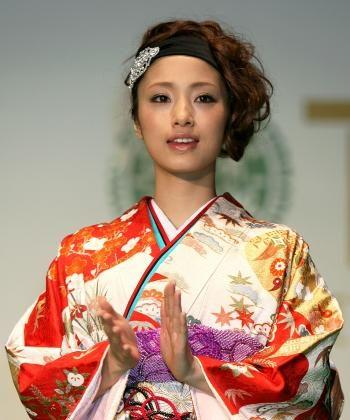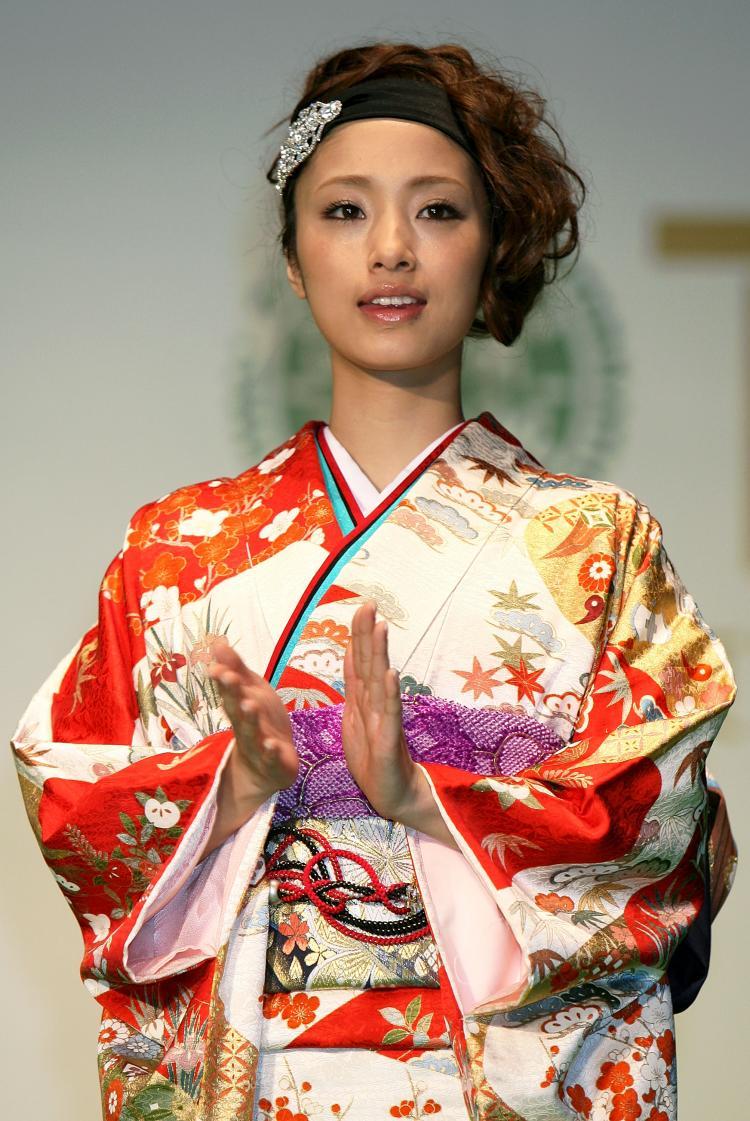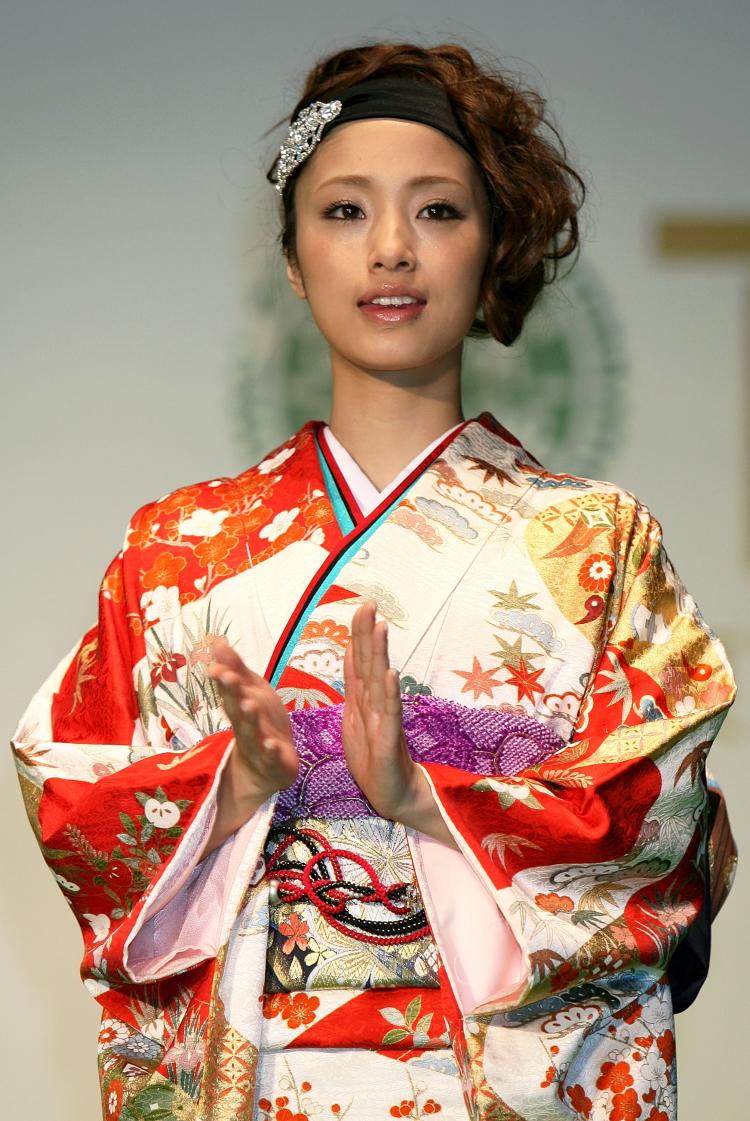On a whim I bought a ticket to an evening presentation with kimono designer Nobuaki Tomita at the Asian Art Museum in San Francisco. That day, I had my first taste of the complexities of Japanese clothing.
Tomita works to design and dress characters in Japanese period dramas, so he pays special attention to historical accuracy and cultural nuances. In his presentation, Tomita carried the audience through the production of a kimono, how it is worn, and the unique way it is able to represent the personality of its wearer.
A Kimono is Born
The process of creating a kimono is almost scientific.
First is the selection of patterns that are painted onto the cloth. The colors and pattern must fit the age and status of the wearer, as well as season and occasion. For example, darker colors are typically for married women, cherry blossoms are for spring, and black is for weddings and funerals.
After the pattern is selected, the cloth is chosen from a room filled with long bolts of white cloth. Each bolt of cloth bears a woven pattern, usually of a river and waves, arrows, butterflies, flowers, or bamboo. Thirdly, the kimono’s base color is applied. The bolt is stretched out from its holder while an artist uses a flat and wide brush to apply the dye quickly and evenly.
Next, the designs are painted on by hand, and then gold is applied to areas where the design dictates. Gold comes in gold paint, flakes, powder or gold leaf. The colors are set and the cloth goes to the seamstress, who sews the panels together by hand. The last step is stain removal to catch any slips of the paintbrush from earlier steps.
The finished kimono consists of several 14-inch wide panels of cloth. The beauty of such an untailored garment is its versatility. Excess fabric is sewn into the seams. When it is cleaned in the traditional way, the cleaner disassembles the garment, sews it back into its original form as one continuous piece of cloth, and then cleans it. Thus, each cleaning can also be a refitting if the wearer grows taller or gains weight.
To Wear the Self on the Sleeve
Donning a kimono appropriately is like wearing a badge—personal attributes such as the age, marital status, clan, and occupation are woven into the garment as if it is a secret language.
A wearer’s identity is shown first in the painted designs of her kimono and second in the way she wears her obi, or waist sash.
An obi can be tied in a plethora of styles. There’s the commonly seen taiko obi, which is boxy, to resemble a taiko drum. A horned style is considered “edgy” and “inappropriate for a wife,” Tomita said.
During a modeling session, Tomita’s assistants demonstrated the difference between the dress of an innkeeper and a mafia wife with a deft transformation. They pulled down the back of the model’s kimono by a bit so that the nape of her neck showed and then slightly lowered the overlap in front. They then retied her obi in the horned style—instant mafia wife.
Unmarried girls wear their obi high, right below the breasts. Married women wear it squarely on the waist while older women wear it slightly lower on the waist. Accents worn over the obi must follow the same principle.
Tomita explained that long swinging sleeves (furisode) can only be worn before marriage. After marriage, a woman must wear “small sleeves” (kosode). My initial thought was that the custom must have risen out of practicality—big sleeves would be cumbersome for a housewife. Tomita’s explanation was surprising: “Bigger sleeves are good for catching men!” he said, jokingly swatting one of his assistants with his own sleeve.
A Dying Language
Tomita and his colleagues may be the few last champions of kimono tradition. Though still standard in ceremonial wear, the kimono has simply become too bulky for contemporary life. Most new kimono-owners buy pre-made kimonos; few have them custom-made as they were meant to be. It is likely that even fewer fully understand how to “read” kimonos.
There are organizations in Japan that encourage the wearing of kimonos in everyday life. The Sodo Kimono Academy of Norio Yamanaka is one. More are based in Kyoto where the textile industry is centered.
While efforts are being made to keep the kimono in peoples’ hearts, the art has seen a decline. There are now but two traditional weaving companies in Japan, one of which is owned by one of Tomita’s assistants. “Every season 25,000 people join the kimono industry, and every season 25,000 leave. It’s just too hard,” Tomita said.
The Epoch Times publishes in 35 countries and in 19 languages. Subscribe to our e-newsletter.








Friends Read Free